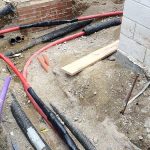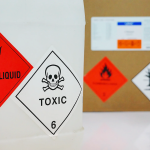Grease Trap Cleaning MythBusters: Separating Fact from Fiction
Grease traps are a crucial part of kitchen operations for many businesses in the food and hospitality industry. These devices are designed to prevent fats, oils, and grease (FOG) from entering the wastewater system. However, a number of myths surrounding their operation exist, often leading to poor practices and costly consequences.
This article aims to clarify the most common misconceptions surrounding grease traps. We’ll explore the facts, provide guidance, and help businesses understand why professional grease trap servicing is essential for compliancy and efficiency.
Myth 1: Pouring Hot Water Down the Sink Flushes the Grease Away
A widespread belief is that pouring hot water down the sink will dissolve grease and allow it to pass harmlessly through the plumbing. While this may seem logical, it is far from effective.
The truth is, while hot water may temporarily liquefy grease, it quickly cools as it travels through the pipes. As it cools, the grease solidifies again, clinging to pipe walls and eventually causing blockages. This not only affects the plumbing on your premises but can also lead to significant damage to municipal sewer systems.
Regular grease trap cleaning ensures that FOG is captured and removed before it causes problems. Relying on hot water as a shortcut only postpones the inevitable and makes the eventual fix more expensive.
Myth 2: Grease Traps Only Need Cleaning When They Smell Bad
Another common misconception is that grease trap cleaning is only necessary when bad odours become noticeable. While unpleasant smells are a sign of an overfull or poorly maintained grease trap, waiting for this cue is neither efficient nor compliant with regulations.
FOG buildup begins affecting performance long before any smell is detected. A poorly maintained grease trap can allow grease to escape into the wastewater system, potentially resulting in damage to infrastructure, disruption of operations, and environmental fines
By the time odours become noticeable, the grease trap may already be failing. A regular, professional cleaning helps businesses stay ahead of such issues and ensures that they remain compliant with health and safety regulations.
Myth 3: DIY Cleaning is Just as Good as Professional Servicing
Some business owners believe that cleaning a grease trap is a simple task that can be handled in-house. While it is possible to conduct basic maintenance, proper grease trap cleaning involves more than just emptying the trap and rinsing it with water.
Professional services, such as those provided by Clarence Valley Septics, involve the complete removal of FOG and solids, inspection of the trap for damage, and disposal of accumulated waste in accordance with environmental standards. Inexperienced handling can result in incomplete cleaning, improper disposal, or even damage to the trap itself.
These facts highlight the importance of thorough removal and responsible disposal, both of which are best undertaken by trained professionals with the right equipment.
Myth 4: Small Businesses Don’t Need to Maintain Their Grease Traps
It’s a common belief that smaller operations such as cafes, food trucks, or local takeaway shops generate too little grease to require regular grease trap cleaning. However, even small volumes of FOG can accumulate rapidly and cause serious problems.
Smaller establishments may use high-fat ingredients and cooking methods that contribute significantly to grease buildup. Over time, even minimal deposits can undermine plumbing systems and violate wastewater regulations.
Ignoring this aspect of kitchen maintenance doesn’t just risk fines, it can also lead to emergency plumbing costs, business interruptions, and reputational damage. All food-related businesses, regardless of size, benefit from adhering to proper grease trap cleaning and maintenance.
FOG Facts and Compliance
Acknowledging the full workings of grease traps is essential for any business that has them installed in their premises, and understanding FOG is not just helpful but will also assist with compliance and adherence to government standards and environmental regulations.
Grease traps are built to capture fats, oils, and grease from wastewater, stopping them from entering and harming the sewer system. When maintained properly, they not only ensure compliance but also support smoother kitchen operations and reduce the likelihood of costly repairs.
Businesses that treat grease trap cleaning and maintenance as a priority demonstrate a commitment to sustainability, hygiene, and responsible operation. This builds trust with customers, employees, and regulators alike.
Professional Grease Trap Cleaning: The Smart Choice
Clarence Valley Septics offers professional, compliant grease trap cleaning services across Northern New South Wales. Our technicians use specialised equipment to ensure the complete removal of any FOG, along with trap integrity and responsible waste disposal.
We work with businesses of all sizes to and provide cleaning that meets operational needs and regulatory standards. Whether you’re running a commercial kitchen or a small café, we understand the challenges and can tailor our services accordingly.
Embracing grease trap myths can lead to shortcuts and mistakes, but with the right support, businesses can stay efficient, compliant, and environmentally responsible.
Common Grease Trap Myths – In Conclusion
Misconceptions about grease traps can lead businesses into serious trouble, from blocked pipes to environmental breaches. Through gained knowledge business owners can make informed decisions that protect both their operations and the community.
Whether you operate a large kitchen or a small eatery, proper maintenance of your grease trap is essential. And when it comes to thorough, compliant cleaning, professional services are a must.
Contact Clarence Valley Septics
Don’t let grease trap myths steer your business in the wrong direction. Contact Clarence Valley Septics for professional cleaning and maintenance services that will keep your business compliant and running smoothly.


